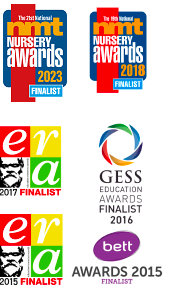Understanding the World, one of the four specific areas of learning in the original EYFS framework, is designed to provide guidance and opportunities for children to make sense of their physical world and their community. This can be achieved through opportunities to observe, explore, investigate and find out about places, people, technology and the environment.
Babies and young children ‘find out’ about the world very effectively when they investigate by touching, holding or pressing things and by climbing on and jumping off things (generally doing a lot of the things we ask them not to do, or worry about while they are doing it!) They experience the world through all of their senses, from touch and taste to smells and sounds around them. They learn associations to those feelings and senses.

As children grow they explore the world in a slightly different manner and love to investigate how and why things work and to test out their ideas of what will happen if they do a particular thing. They enjoy problem solving and action and consequences. They may want to take things apart, or may simply want to turn an object over and over in their hands to explore it in more detail than when they were younger. They start to question and look for deeper learning opportunities. Providing a range of experiences, as well as resources, is important at this stage to help children to develop a wider sense of the world past their immediate surroundings of home and nursery. There are lots of ways to create opportunities in your indoor and outdoor environments which allow for exploration.
Let’s explore these aspects further;
The world

The world covers aspects to help children know about differences and similarities around them and in the wider world. It provides opportunities for experimentation, to explain why some things occur and to talk about how and why things change, by learning to make observations.
Exploring and understanding places for children initially start in their own home and other familiar places nearby, this develops into children to notice objects, patterns, sequences on journeys to and from home, such as the colour of a building, the number on a door. This can be frustrating sometimes for parents as children will take a very long time to get from A to B on a journey as they start to be engaged by anything around them, but is a vital part of this exploration.
It is important that children are provided with opportunities and activities both indoors and outdoors to encourage children’s interest and curiosity. Activities and play should be activities based on first-hand experiences that encourage exploration, problem solving, experimentation, prediction, observation, critical thinking, decision making, and discussion.
People and communities

Learning about people and communities starts with being curious about individuals, learning people’s names and enjoying looking at photos and books about themselves and their families. This develops into being a positive contributor to a group and acknowledging and accepting the differences between people, learning about and celebrating cultural celebrations and events. As children start to understand about the people in their life, it’s important to provide opportunities for children to talk about past and present events in their life. Asking parents to send in key photos from a child’s early life when they are celebrating their own birthdays and special events can help them to see their place in their own communities.
Technology

Technology nowadays is commonplace in most households, and whilst we may predominantly think of technology as screen time it crosses a broad spectrum. A wind up toy, a light switch, a car key and pressing the buttons to lock and unlock all contribute to children recognising the role of technology in the childcare setting and at home. This helps children identify the role technology plays in our world and the different types and uses of technology. Children may be much more aware of how technology helps us and can also begin to be creators of digital content, as well as consumers, by introducing technology which allows them to record their voice or take photos and videos.
Although Development Matters has dropped these aspects of learning, the same principles can be applied to help children learn and achieve their ‘Understanding the World’ goals.

